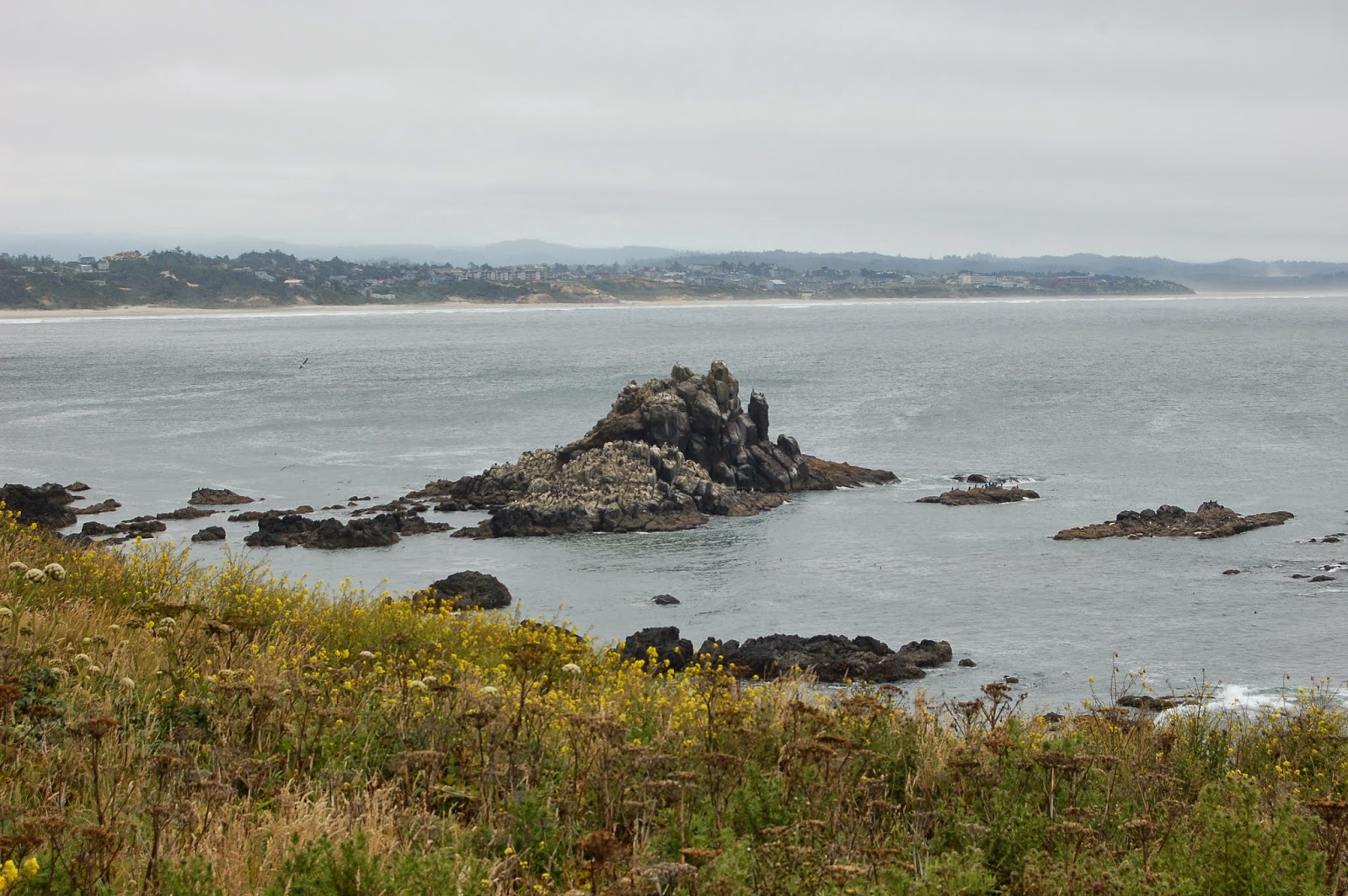Jumping ahead a bit in covering our July trip this year, I realized that in the
two previous anniversary posts, I should have included at least one photo of Dana. And since this is one of my favorite photos from our recent trip, here you go. Why favorite? Because she's so obviously happy to be here, pointing at the contact above her head, like Vanna White doing a show called "Wheel of Earth History."
But there's some very pleasing geology here, too. Regular readers may remember that in last year's series, I posted a couple of photos of
Elephant Rock, at
Seal Rock State Park. I was initially frustrated in trying to explain vertical jointing in a vertically tabular sheet of basalt, but I finally generated an idea of how that could happen: it wasn't a dike, as I'd long thought, but an eroded mass that was
originally horizontally cylindrical. I couldn't support that with evidence, but it was plausible, and explained those vertical columns.
Now I have evidence! Dana is standing in front of (Miocene) Astoria Formation, and above and to the left of where she's pointing, you can see the lower contact of a Columbia River Basalt flow. AND... it's tilted just as one would expect if that invasive episode was originally cylindrical! (There are also some nice cross-beds in the lower right, but I have better photos of those for later.)
So not only did this make Dana happy, it made me happy, too.
Photo unaltered. July 15, 2014.
FlashEarth Location.



















